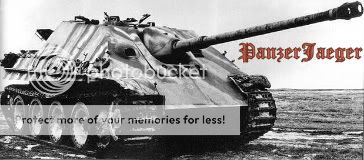
Originally Posted by
Husar
Now the germans had their share of tank destroyers but I find it noteworthy that the guns in the Panther, Tiger and Tiger II were pretty much antitank guns put into tanks, just like the guns in their tank destroyers which I guess is one of the reasons their tanks fared so well against the allied tanks while the pure infantry support tanks would have large caliber, low-velocity guns to destroy buildings etc., like the Brummbär for example or the earlier versions of the Panzer IV. The Panther and Tiger seem to me more like intermediate versions in the sense that they could destroy tanks but you can use pretty much any cannon to shoot a hole into a building when necessary, the ones they made were just smaller. The sherman however was apparently rather useless against other tanks, at least from the front so the american forces had more of a gap between tank destroyers and tanks if I understand that correctly.
Still curious about cannon stabilization though, does anyone know about that?
Originally Posted by Husar









 Reply With Quote
Reply With Quote
Bookmarks